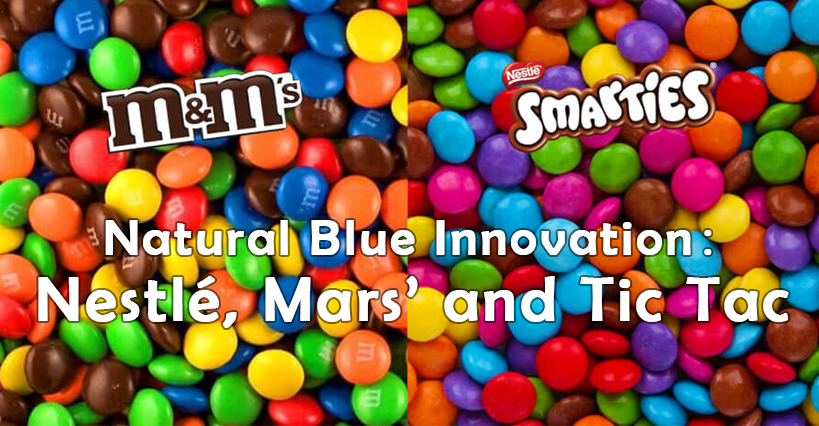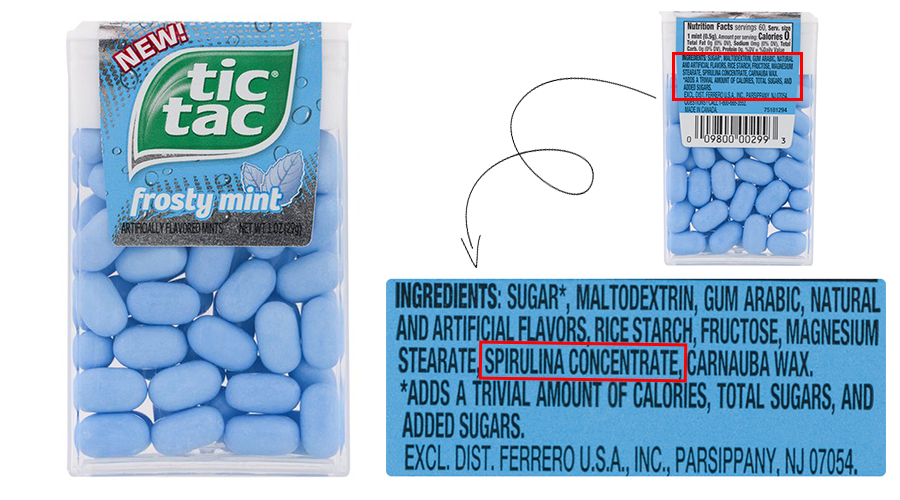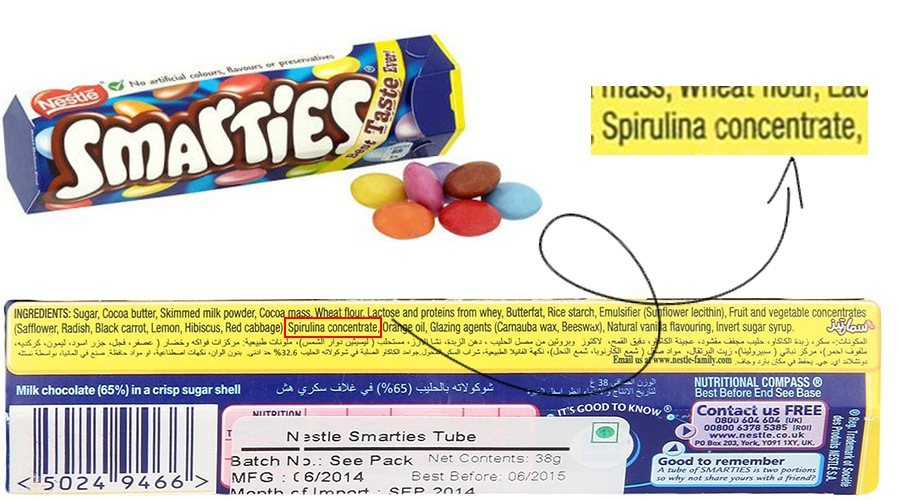
Natural Blue Innovation: Nestlé, Mars’ and Tic Tac
In January 2012, confectionery giant Mars sent a petition to the FDA asking for spirulina (blue and green) to be allowed to be tinted in confectionery and chewing gum. The FDA responded and approved the request, allowing spirulina (blue and green) to be tinted instead of FD&C Blue# 1 (bright blue).
Not only that, but then in 2014, the FDA will use expanded by candy, including candy and gum, sugar, ice cream, and frozen desserts, dessert coatings and topping, drink mixture and powdered drinks, yogurt, mousse, pudding, cheese, gelatin, bread crumbs and ready-to-eat cereals (not including puffed grains), and used in dietary supplements and capsule of coating formula, demand in line with the good manufacturing practice, also can be used in the dyeing of the eggshell, but it cannot be applied to the federal food, drug and cosmetics act the 401st part of the standard products.
The European Union has even earlier passed a law requiring spirulina (blue and green) to be labeled “spirulina concentrate” on ingredient labels.
Tic Tac: The king of the mint world
Tic Tac is a brand of menthol from Ferrero and is usually sold in small, transparent plastic cases with flap hinged covers. The name TicTac tick-tock may have something to do with its opening and closing — the lid closes to make a beep, and the lid opens to make a beak.
On closer inspection, Tic Tac, which was born in 1969, has been around for 50 years. It is almost the shoulder of the confectionery industry in Europe and can be found in almost every convenience store. You can find more than 20 versions of the Tic Tac, ranging from the classic mint to lemon and even popcorn.
Tic Tac’s frosty mint is one of the most popular flavors. The Tic Tac is popular not only for its taste but also for its color. Tic Tac adds spirulina concentrate to frosty mint, the secret ingredient in this best-selling mint blue.
Although most of the blue pigment in circulation on the market is the powder algal blue pigment, spirulina juice perfectly avoids the dust flying in the use of the powder algal blue pigment, which takes a long time to dissolve, and is therefore favored by Tic Tac.

Nestle: If it’s not natural, take it off the shelves
Back in 2008, Nestle removed all colored candy made with synthetic coloring because of health risks, so the blue Nestle candy was replaced with white. Many consumers were disappointed and protested, but Nestle stuck with the practice.
It wasn’t until three years later that nestle found a new blue solution. They found algal phycocyanin(blue spirulina) in spirulina. It is usually used as a dietary supplement because it contains a large amount of protein, which has a dry weight of 55% to 77%, as well as essential amino acids, multivitamins, and other minerals.
Thanks to this, nestle’s blue SMARTIES are back on the shelves, and they’ve got rid of the artificial coloring problem and labeled the candies as natural and healthy. Today, in all nestle products, you can see blue confectionery nestle all use spirulina concentrate for coloring. In addition to the common SMARTIES tubular candies, Easter eggs also use spirulina concentrate.

Mars: After so many years, colored candy is back
For a long time, Mars Inc didn’t find an appropriate source of natural color, which can be used in the manufacture of green and blue candy. To meet consumers’ expectations, they have even from the shelves with FD&C blue colored products, until they found the spirulina concentrate, it opens up new opportunities for natural blue and green.
Mars Inc provided a number of published studies that investigated the toxicity of various spirulina powder extracts. The results of these studies showed no toxic effects at the doses that were tested. There is a low probability that the phycocyanins are protein allergens.
